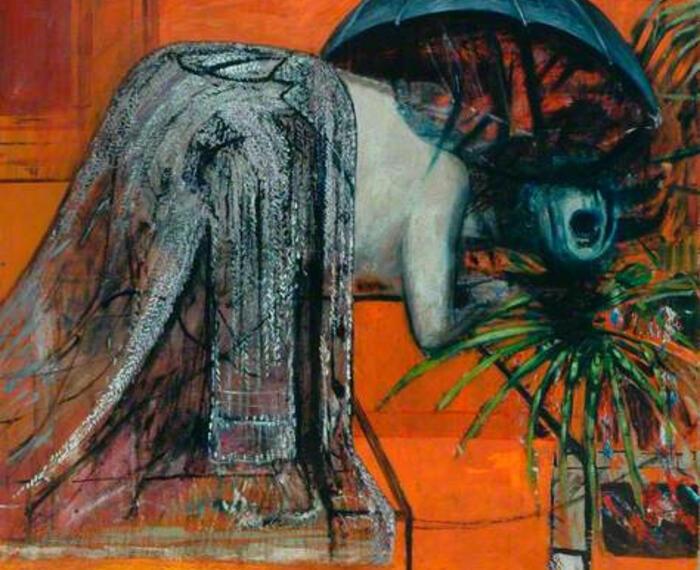

František Kobliha (b 1877 Prague – d. 1962), born into a Czech family of small shopkeepers, was a painter, graphic artist and art critic. He studied at University of Applied Arts (1896-99) and The Academy of Fine Arts in Prague (1901-05), where he studied painting with Professor Zenisek. From 1901, his works appeared in the magazine Zlatá Praha. His work embodied poetic and literary themes; he first exhibited with the SURSUM group at the Brno exhibition (1910), becoming its first chairman. From 1911 he wrote for Modern Revue, a Czech a magazine devoted to contemporary literature (native and translated), fine arts, art criticism and theory.
Kobliha began to experiment with printmaking once he left the university; he abandoned colour for black and white tonal variations, and although he initially preferred lithography, Kobliha concentrated on wood engraving for much of his career. His early series of prints include Simple motifs (1908); The Small Hours (1909); Tristan (1909-1910); Vengeful Plainsong (1910); May (1911); and Woman (1911). Kobliha drew from works by writers such as Hlavacek, Macha, Maeterlinck, Nerval, Poe and Prochazka as a source of inspiration, rather than texts to be illustrated. He became the first chairman of , a group of artists and writers known as the second symbolist generation for their interest in religion and the occult. He participated in their 1910 exhibition in Brno, but left Sursum the following year when he became more involved with the Decadent journal, Modern Review. This was one of the first Czech journals to exhibit graphic art, introducing Odilon Redon, Aubrey Beardsley, Toulouse-Lautrec, Felicien Rops and Felix Valloton. Kobliha contributed critical articles as well as providing illustrations and designs for the magazine as a 'beautiful book'. Kobliha also worked on bibliophile editions of literary works published by Kamilla Neumannova, often using floral motifs and the story's central figure as frontispiece. In 1914, Kobliha published his views of Prague, revealing its abandoned and secretive places rather than the city's conventional landmarks. Whilst in 1916 he produced Stories and Legends, a series that includes fantastic hybrids and monsters, by 1919 Kobliha returned to realistic settings in his depiction of Romantic mountain landscapes, From Sumava, From Tatras. The influence of this study of Nature is evident in The Temptation of Saint Anthony (1925) where Kobliha pays attention to the detailed presentation of exotic flowers.
Sharing the views of Arnost Prochazka, the editor of Modern Review, Kobliha took an increasingly conservative stance against progressive artistic trends from 1920 onwards; he included the work of Zrzavy and Vachal, former members of SURSUM, in this critical attack on modern art. He became a member of Hollar, the graphic artists' association, in 1923; he wrote for their magazine and was chairman from 1934-38. During the 1920s, Kobliha produced his own bibliophile editions of works by authors such as Zeyer, Karasek, Opolsky and Medek. In the 1930s he returned to colour through pastels and watercolours, producing works that can be related to interwar abstract art. Between 1944-50, Kobliha made the following series of lithographs, Fantasy of lunar nights (1944-6), Midnight Visions (1949) and Cosmic Visions (1946) and in 1950 he produced 30 lithographs inspired by the poems and prose of Edgar Allen Poe. Kobliha had a profound appreciation for the work of Odilon Redon; in his article on the artist, he describes graphic art as the medium in which one can 'express the innermost experiences of the spirit, the idea and the dream'. Indeed, Kobliha's solitary figures, often presented with their backs turned against the viewer as they look into a night sky, cultivates an atmosphere of introspection and imagining. Petr Wittlich describes Kobliha's work as somewhere between the Decadent tone of Hlavacek, the lyricism of Jan Preisler and the transcendentalism of Frantisek Bilek.